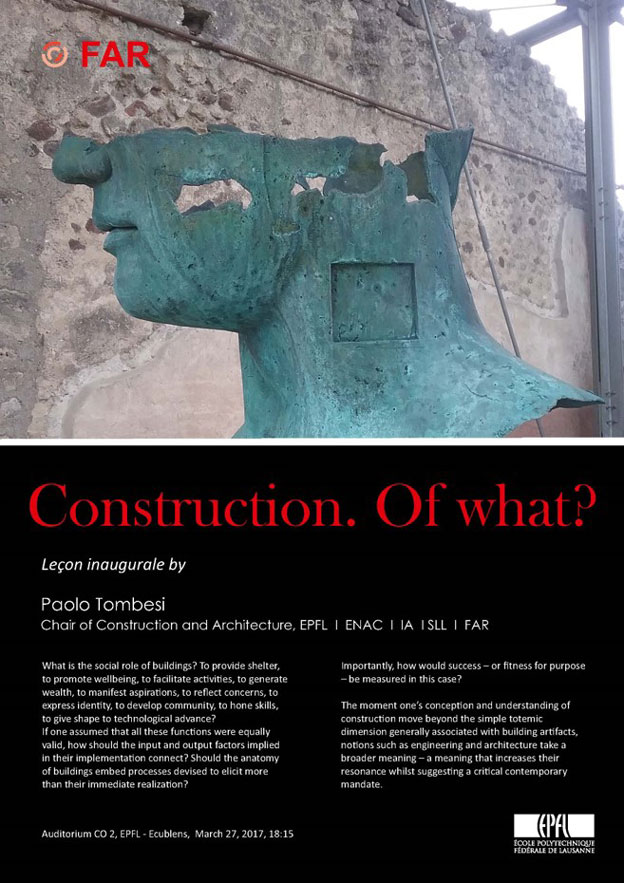
What is the social role of buildings? To provide shelter, to promote wellbeing, to facilitate activities, to generate wealth, to manifest aspirations, to reflect concerns, to express identity, to develop community, to hone skills, to give shape to technological advance?
If one assumed that all these functions were equally valid, how should the input and output factors implied in their implementation connect? Should the anatomy of buildings embed processes devised to elicit more than their immediate realization? Importantly, how would success – or fitness for purpose – be measured in this case?
The moment one’s conception and understanding of construction move beyond the simple totemic dimension generally associated with building artifacts, notions such as engineering and architecture take a broader meaning – a meaning that increases their resonance whilst suggesting a critical contemporary mandate.
Link image (previous page): EPFL, Lausanne; bottom images: design and building tools, Tombesi (2018)